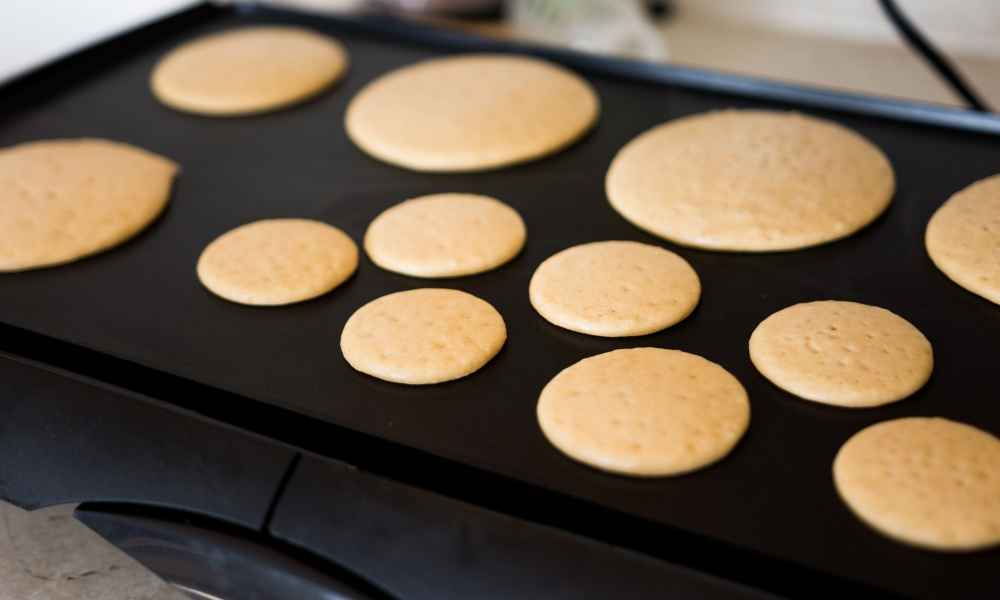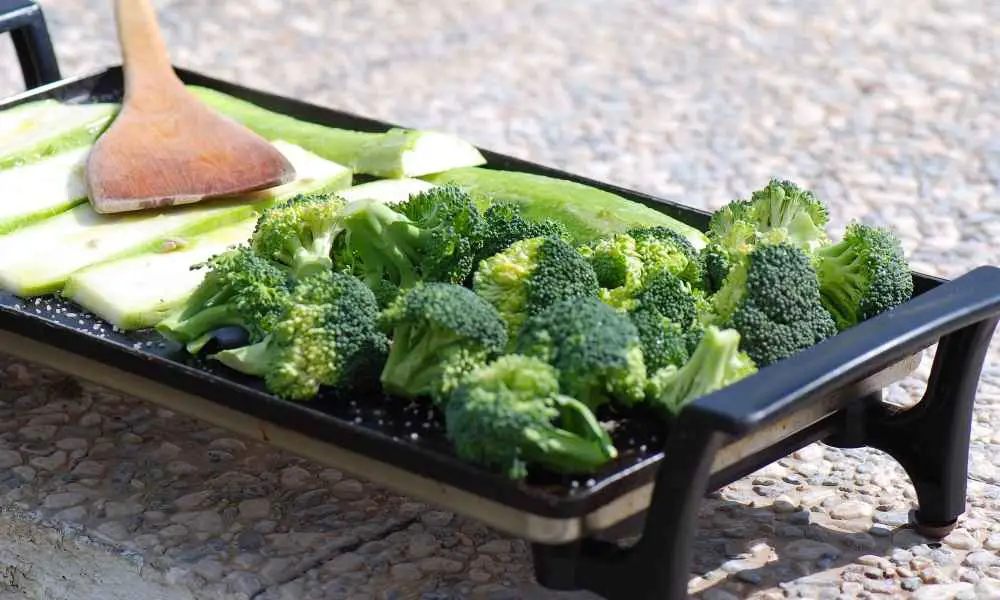Are you wondering if griddle cooking is healthy? Griddles are a popular cooking tool that can be used to cook a variety of foods, from pancakes and eggs to burgers and vegetables. But are they a healthy option? The answer is not a simple yes or no.
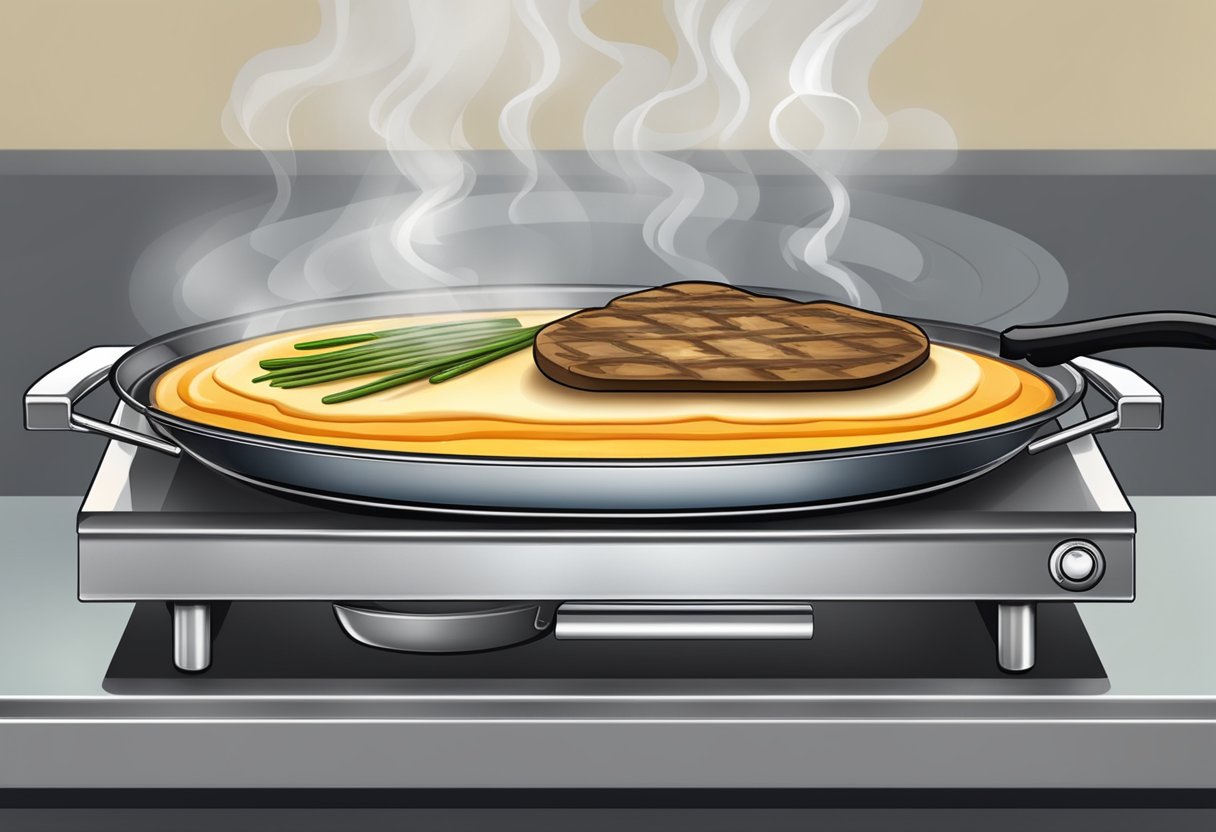
When it comes to health, there are several factors to consider in griddle cooking. One of the benefits of cooking on a griddle is that it typically requires little oil, making it a healthier option compared to other cooking methods. However, some griddles may be made with materials that can release harmful chemicals when heated to high temperatures. Additionally, cooking at high temperatures can create carcinogenic compounds in some foods.
In this article, we will explore the pros and cons of griddle cooking and provide you with the information you need to make an informed decision about whether or not it is a healthy option for you. We will discuss the benefits of cooking on a griddle, potential health risks, and tips for cooking healthy meals on a griddle.
Understanding Griddle Cooking
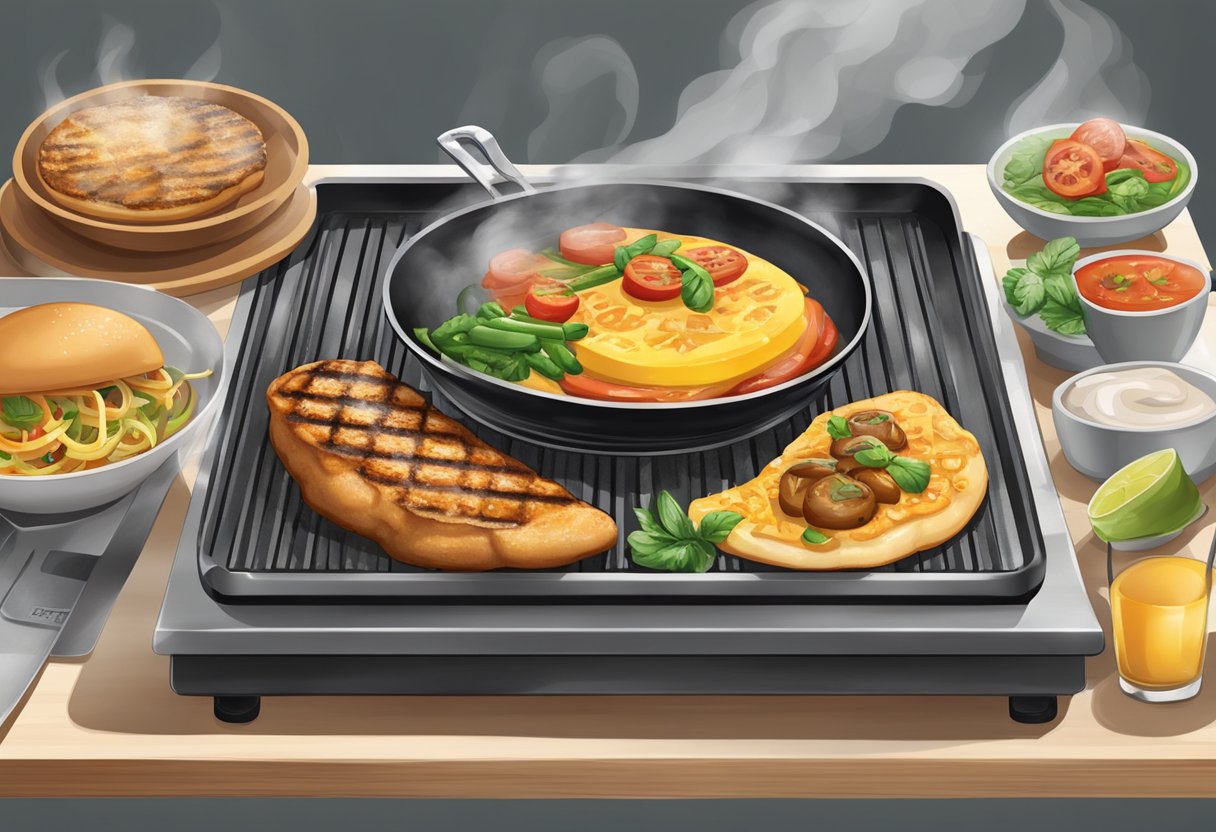
What is Griddle Cooking?
Griddle cooking involves using a flat cooking surface made of cast iron, stainless steel, or other materials to cook food. The surface is heated to a high temperature, and the food is cooked directly on the surface. Griddles are commonly used in restaurants and diners to cook breakfast foods like pancakes, eggs, and bacon, but they can also be used to cook a variety of other dishes.
Griddle cooking can be done indoors or outdoors. Indoor griddles are typically electric and can be used on a countertop or stovetop. Outdoor griddles are often gas-powered and can be used on a patio or deck. Griddles come in different sizes, so you can choose one that fits your needs and the amount of food you want to cook.
Methods of Griddle Cooking
There are several methods of griddle cooking, each with its own advantages and disadvantages. Here are some of the most common methods:
- Dry Cooking: This method involves cooking food directly on the griddle surface without any added fat or oil. This is a healthier way to cook food, but it can result in dry or tough food if not done correctly.
- Oil Cooking: This method involves adding a small amount of oil or fat to the griddle surface before cooking. This helps prevent sticking and adds flavor to the food. However, it can also add calories and fat to the dish.
- Steam Cooking: This method involves adding a small amount of water or broth to the griddle surface before cooking. The steam helps cook the food and keeps it moist. This is a healthy way to cook food, but it can result in a softer texture.
- Combination Cooking: This method involves using a combination of dry cooking, oil cooking, and steam cooking to achieve the desired result. This allows you to control the amount of fat and calories in the dish while still keeping it flavorful and moist.
Griddle cooking can be a healthy way to cook food if done correctly. By choosing lean cuts of meat, using healthy oils, and controlling the amount of added fat, you can create delicious and nutritious meals on a griddle.
Health Aspects of Griddle Cooking

Griddle cooking is a popular way to cook food, but is it healthy? In this section, we will explore the nutritional value of griddle cooking and the use of oil and fats.
Nutritional Value
Griddle cooking can be a healthy way to prepare food, especially if you use lean cuts of meat and plenty of vegetables. Griddle cooking allows you to cook food quickly and evenly, which can help preserve the nutritional value of your food.
One study found that griddle-cooked vegetables retained more of their vitamin C content than vegetables that were boiled or steamed. Another study found that griddle-cooked meat had higher levels of certain amino acids than meat that was cooked on a grill.
However, it is important to note that griddle cooking can also lead to the formation of harmful compounds, such as acrylamide and polycyclic aromatic hydrocarbons (PAHs), which can increase the risk of cancer. To reduce the formation of these compounds, it is important to avoid overcooking your food and to use lower cooking temperatures.
Use of Oil and Fats
When it comes to health, griddle cooking often requires little to no oil, allowing you to cook with less fat. This can be particularly beneficial if you’re looking to reduce your fat intake or follow a low-fat diet.
However, some types of griddle cooking, such as cooking pancakes or eggs, may require the use of oil or butter to prevent sticking. In these cases, it is important to use healthier oils, such as olive oil or coconut oil, and to use them sparingly.
Overall, griddle cooking can be a healthy way to prepare food, as long as you use healthy ingredients and cooking methods. By choosing lean cuts of meat, plenty of vegetables, and healthy oils, you can enjoy delicious and nutritious meals that are good for you.
Comparative Analysis
https://www.youtube.com/watch?v=tpyzEQCWXOI&embed=true
Griddle Cooking vs Traditional Cooking
When it comes to cooking, there are many methods to choose from. Traditional cooking methods often involve the use of pots, pans, and the oven. Griddle cooking, on the other hand, involves a flat cooking surface that is heated by gas or electricity. Here are some advantages and disadvantages of griddle cooking compared to traditional cooking:
- Speed: Griddle cooking is generally faster than traditional cooking methods. The flat surface heats up quickly and evenly, allowing you to cook food faster. This can be especially useful when you are short on time or cooking for a large group of people.
- Health Benefits: Griddle cooking can be a healthier option than traditional cooking methods. The flat surface allows you to cook food without adding extra oil or fat, which can help reduce calories and fat intake. Additionally, griddle cooking can help retain more nutrients in your food compared to traditional cooking methods.
- Limited Variety: Griddle cooking is limited in terms of the types of food you can cook. While you can cook a variety of foods on a griddle, it may not be the best option for cooking certain dishes. Traditional cooking methods offer more versatility in terms of the types of food you can cook.
Griddle Cooking vs Grilling
Grilling is another popular cooking method that is often compared to griddle cooking. Here are some advantages and disadvantages of griddle cooking compared to grilling:
- Less Smoke: Griddle cooking produces less smoke than grilling, making it a better option for indoor cooking. Grilling can produce a lot of smoke, which can be a problem if you are cooking indoors or have limited ventilation.
- More Control: Griddle cooking allows for more control over the cooking process. The flat surface allows you to cook food evenly and avoid hot spots. Grilling, on the other hand, can be more difficult to control, especially if you are cooking over an open flame.
- Less Flavor: Griddle cooking may produce less flavor than grilling. Grilling can add a smoky, charred flavor to your food that is difficult to replicate on a griddle. However, griddle cooking can still produce delicious and flavorful food.
Overall, griddle cooking can be a healthy and convenient option for cooking a variety of foods. While it may not be the best option for every dish, it can be a great addition to your cooking repertoire.
Pros and Cons of Griddle Cooking
https://www.youtube.com/watch?v=SrhYqKcf-2Y&embed=true
Benefits of Griddle Cooking
Griddle cooking offers a number of benefits that make it a popular choice for many home cooks. Here are some of the advantages of griddle cooking:
-
Versatility: Griddles can cook a wide range of foods, including pancakes, eggs, burgers, and vegetables. With a griddle, you can cook an entire meal at once, which can save you time and effort.
-
Even Cooking: Griddles provide an even cooking surface, which means that your food will cook evenly without hot spots. This can help you avoid burning your food and ensure that it is cooked to perfection.
-
Less Fat: When you cook on a griddle, the excess fat from your food drips away, which can help you reduce your overall fat intake. This makes griddle cooking a healthier option than frying.
-
Easy to Clean: Griddles are easy to clean, especially if you choose a non-stick option. Simply wipe down the surface with a damp cloth or sponge, and you’re done.
Drawbacks of Griddle Cooking
While griddle cooking offers many benefits, there are also some drawbacks to consider. Here are some of the disadvantages of griddle cooking:
-
Limited Temperature Control: Griddles typically have limited temperature control, which means that you may not be able to cook certain foods at the right temperature. This can result in overcooked or undercooked food.
-
Not Ideal for Large Groups: If you’re cooking for a large group of people, a griddle may not be the best option. While griddles can cook a lot of food at once, they may not be able to keep up with the demand of a large group.
-
May Require Extra Equipment: Depending on the type of griddle you have, you may need to purchase additional equipment, such as a scraper or spatula, to ensure that your food cooks evenly.
-
May Not Be Suitable for All Foods: While griddles can cook a wide range of foods, they may not be suitable for all types of food. For example, griddles may not be the best option for foods that require a crispy or crunchy texture, such as fried chicken or french fries.
Overall, griddle cooking can be a healthy and convenient option for many home cooks. However, it’s important to consider the pros and cons before deciding whether griddle cooking is right for you and your family.
Conclusion
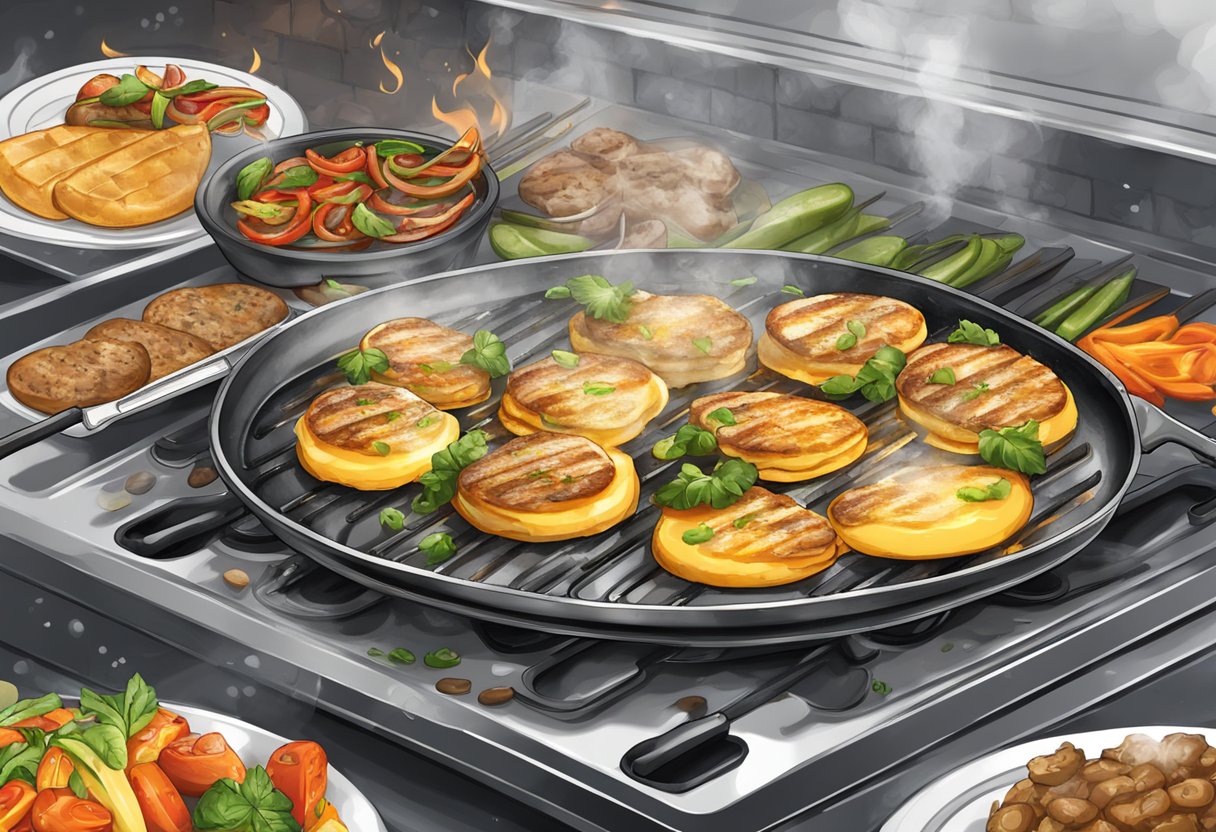
In conclusion, cooking on a griddle can be a healthy option if you choose the right ingredients and cooking methods. Griddles are great for cooking lean proteins and vegetables, as they allow excess fat to drip off the food through the grates. However, if you only cook high-fat foods like bacon and sausages, griddle cooking may not be the healthiest option.
When cooking on a griddle, it’s important to use healthy oils like olive oil or coconut oil instead of butter or other high-fat oils. You can also use non-stick cooking spray to reduce the amount of oil needed. Additionally, avoid overcooking your food as it can lead to the loss of important nutrients.
It’s worth noting that griddle cooking may not be suitable for everyone. If you have a health condition that requires a low-fat diet, you should consult with your doctor or a registered dietitian before incorporating griddle cooking into your diet.
Overall, griddle cooking can be a healthy and delicious way to prepare your meals. By choosing the right ingredients and cooking methods, you can enjoy the benefits of griddle cooking without sacrificing your health.
Frequently Asked Questions
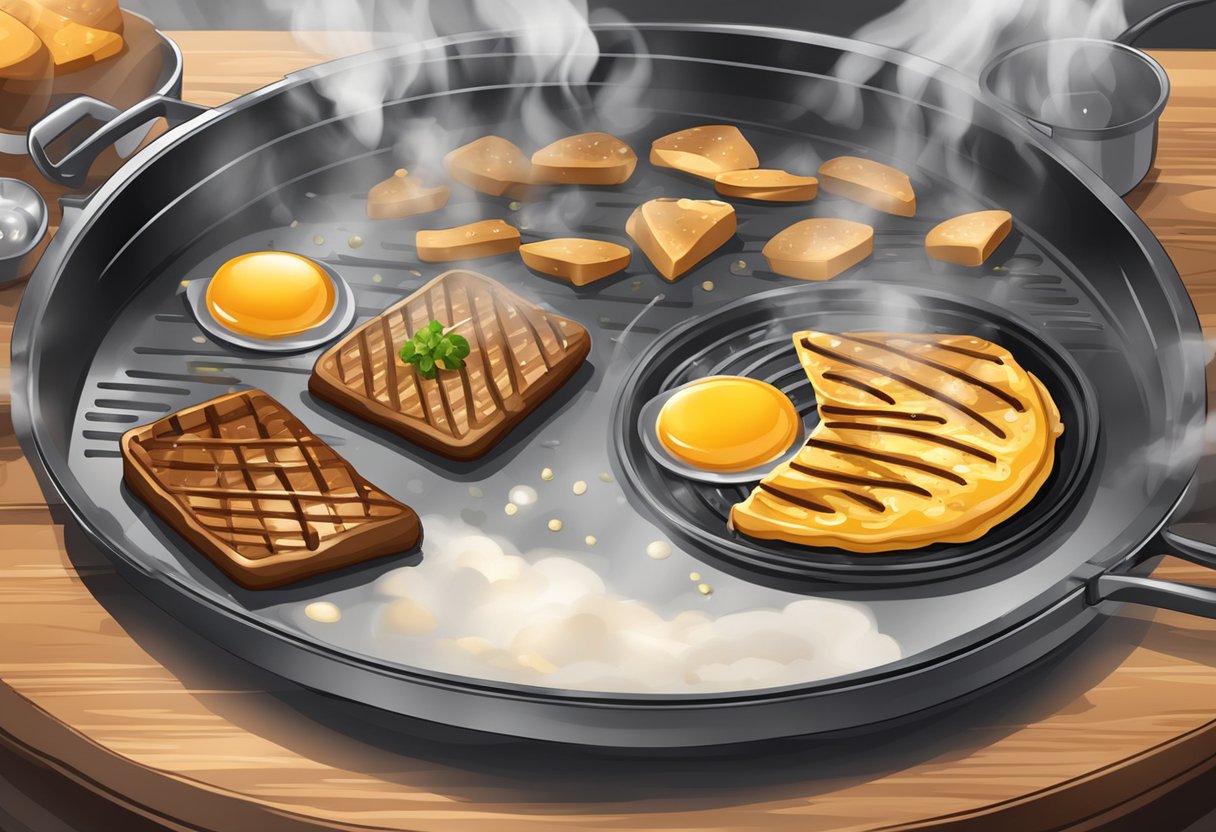
Is griddle cooking a healthy option?
Griddle cooking can be a healthy option if you choose the right ingredients and cooking methods. Griddles are great for cooking lean meats, vegetables, and fruits without adding extra fats or oils. However, if you cook high-fat foods like bacon or sausages, the excess grease can accumulate on the griddle and increase the calorie count of your meal.
What are the benefits of cooking on a griddle?
Cooking on a griddle has several benefits. Griddles offer a large cooking surface that allows you to cook multiple items at once, which can save you time and energy. Griddles also distribute heat evenly, so your food cooks more evenly. Additionally, griddles are versatile and can be used to cook a variety of foods, including eggs, pancakes, burgers, and vegetables.
Can you eat healthy on a griddle?
Yes, you can eat healthy on a griddle. To make your meals healthier, choose lean meats, vegetables, and fruits. Use cooking sprays or oils sparingly, and avoid using excess butter or margarine. You can also experiment with different seasonings and spices to add flavor to your food without adding extra calories.
What is healthier, griddle or grill?
Both griddle and grill cooking can be healthy options if you choose the right ingredients and cooking methods. Grilling is great for cooking lean meats and vegetables, but the high heat can cause carcinogenic compounds to form. Griddle cooking, on the other hand, can be healthier because it doesn’t require high heat and doesn’t produce smoke or char.
What are the disadvantages of a griddle?
One disadvantage of a griddle is that it can be difficult to clean, especially if you don’t clean it immediately after use. Another disadvantage is that griddles can be heavy and take up a lot of counter space. Additionally, griddles can be expensive, especially if you want a high-quality one.
Can you use a pan on a griddle?
Yes, you can use a pan on a griddle. This is a great option if you want to cook something that requires a lid or if you want to keep your food warm while you cook other items on the griddle. Just make sure the pan is compatible with your griddle and that it doesn’t scratch the surface.

